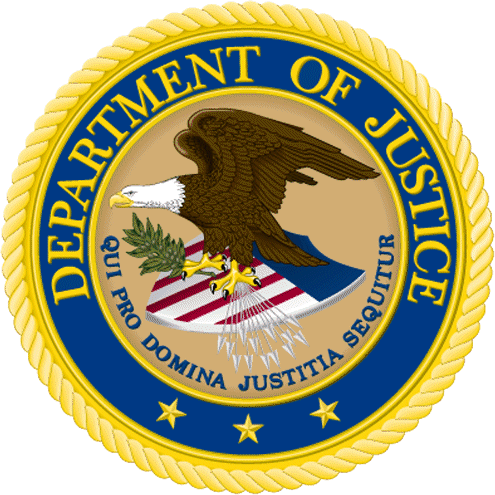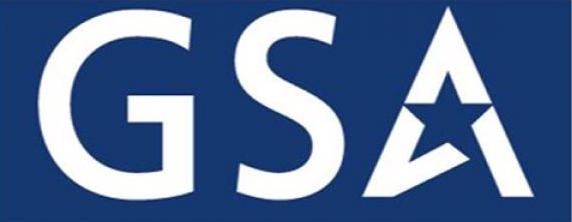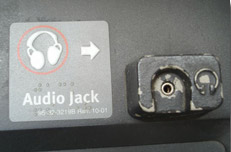
This post is a version of the presentation Lainey Feingold gave in March 2015 at CSUN – the International Technology and People with Disabilities conference held annually in San Diego, California. The conference is sponsored by California State University Northridge (CSUN). The presentation covered legal developments in digital accessibility since CSUN14 (March 2014 through March 7, 2015). The slides shown during the presentation are available on SlideShare. Go to the powerpoint version of this presentation on the Slideshare website now.
This post is part of an occasional series about recent legal developments impacting technology and information access for people with disabilities. The series is illustrated by a toolbox — because law has proven an effective tool in improving the accessibility and usability of digital content, print information and technology for everyone. There are many ways to use the law, reflected by the many tools in the toolbox.
Parts of the update below were included in earlier posts in this series. You can find those posts in the Legal Updates Category of this website. Follow the Law Office of Lainey Feingold on Twitter for legal updates related to information and technology access, particularly for people who are blind and visually impaired. If you would like to be added to my email list, please visit the Contact page.
- Jump to DOJ Enforcement Activities
- Jump to Federal Regulations (Section 508 and ADA)
- Video Captioning Legal Advocacy
- Learn: Education Legal Advocacy
- Right to Read
- Be Healthy
- Be Prepared
- Work
- Bank
- Shop
- Travel
- Conclusion
- Jump to a Simplified Summary of this Document, a feature of LFLegal.com designed to meet WCAG Success Criteria 3.1.5 (a WCAG 2.0 AAA Reading Level requirement).
U.S. Department of Justice Enforcement Actions
 The session started with a question about the United States Department of Justice. Is the DOJ “slow bureaucrats” or “Accessibility Champions”? Because of the following DOJ cases, I think the answer is Accessibility Champions!
The session started with a question about the United States Department of Justice. Is the DOJ “slow bureaucrats” or “Accessibility Champions”? Because of the following DOJ cases, I think the answer is Accessibility Champions!
In settlements with the following entities, the United States Department of Justice required compliance with the Web Content Accessibility Guidelines (WCAG) 2.0 AA.
- Crime and Punishment Museum The Department of Justice Disability Rights Section started the year strong by announcing in early January, 2015 a comprehensive accessibility agreement with the Washington, DC Crime and Punishment Museum. The settlement included digital accessibility. Read the DOJ press release about the Crime and Punishment Museum settlement
- Nueces County Texas Nueces County Press Release Full Nueces County agreement. (January, 2015)
- DeKalb, Illinois In February, 2015 the DOJ announced settlements with four U.S. Cities requiring that online job application sites comply with the Americans with Disabilities Act. Settlement requirements including eliminating disability-related questions and ensuring online accessibility of applications and job related information. The other four cities were Vero Beach, Florida, Fallon, Nevada and Isle of Palms, South Carolina. Read the DOJ job applications press release. The text of all four settlement agreements are linked to the end of the release.
- Florida County Court: On July 17, 2014 the DOJ announced a settlement with a county court system in Florida that requires court records to be accessible to blind people. Read the DOJ accessible court records press release. The case was the result of advocacy by a blind lawyer who couldn’t get documents in accessible formats.
- Florida State University Police Department: The DOJ also reached agreement in the past year with the police department of Florida State University that required the department’s website and mobile applications to be accessible to applicants with disabilities. Read the June, 2014 Florida State University Press Release. Read the full Florida State DOJ settlement agreement
- Peapod Grocery Delivery:
 In November 2014 the Justice Department announced a sweeping digital accessibility settlement with the Peapod grocery delivery company. Read the DOJ Peapod press release. Read the full settlement agreement between Peapod and the United States Department of Justice.
In November 2014 the Justice Department announced a sweeping digital accessibility settlement with the Peapod grocery delivery company. Read the DOJ Peapod press release. Read the full settlement agreement between Peapod and the United States Department of Justice. - Lucky Jeans Statement of Interest On April 10, 2014, the DOJ filed a Statement of Interest in a Florida case brought by blind shoppers against Lucky Jeans about the companies flat screen point of sale devices. Even though the case was not about websites, the Department made the following strong statement about the ADA and the web: “[t]he Department has long considered websites to be covered by title III despite the fact that there are no specific technical requirements for websites currently in the regulation or ADA Standards.” Read the DOJ Statement of Interest in the Lucky case.
The Justice Department settlements did not merely reference digital access. The Department’s agreements include the following provisions to ensure that accessibility becomes embedded in an entity’s policies and development cycles. [Note: not all of the provisions listed here are in each agreement, but they are all in at least one.]
- Agreement provisions cover both Web and Mobile
- The accessibility standard is the Web Content Accessibility Guidelines (WCAG) 2.0 AA for both web and mobile
- Obligation to appoint a web accessibility coordinator
- Obligation to hire an independent accessibility consultant, approved by the DOJ
- Obligation to train all staff, including development and customer service personnel
- Obligation to post a web accessibility policy and an Accessibility Information Page linked from the homepage.
- Obligation to include accessibility compliance in performance evaluations
- Obligation to use a testing tool approved by the DOJ and to conduct usability testing with persons with disabilities.
We may not have specific regulations requiring accessibility or spelling out a standard, but the DOJ’s actions leave no doubt: the Americans with Disabilities Act covers websites and the Web Content Accessibility Guidelines (WCAG) 2.0 AA are the appropriate standard for both web and mobile. Thank you to the attorneys in the Disability Rights Section of the Department of Justice.
Federal Regulations
Section 508
The session briefly touched on the recently issued Notice of Proposed Rule Making (NPRM) for Section 508, as there were many other opportunities at CSUN to discuss the proposal. Visit the Access Board Section 508 Rulemaking page to read the proposed rule and stay current on the process.
The Access Board states that the four biggest changes from the “old” Section 508 are the following:
- Broad application of WCAG for web, mobile and documents
- Covered Electronic Content
- Expanded Interoperability Requirements
- Obligations for Real Time Text functionality
The following dates are important for final implementation of the proposed rule.
- February 27, 2015: Date the Notice of Proposed Rule Making (NPRM) was published in the Federal Register.
- May 28, 2015: End of public comment period.
- Unspecified date after May 28, 2015: Final Rule Published in the Federal Register
- Six months after final rule publication date: Updated Section 508 regulations go into effect.
ADA Web Regulations
 As most readers of this website know, the U.S. Department of Justice issued a Advanced Notice of Proposed Rulemaking (ANPRM) in 2010 on the issue of website accessibility for entities covered by Titles II (state and local government) and III (public accommodations) of the Americans with Disabilities Act. The DOJ enforcement activities mentioned above demonstrate that the DOJ already believes that the ADA covers websites and that WCAG 2.0 AA is the appropriate standard. Still, regulations would significantly increase public awareness about the need for accessible and usable digital content.
As most readers of this website know, the U.S. Department of Justice issued a Advanced Notice of Proposed Rulemaking (ANPRM) in 2010 on the issue of website accessibility for entities covered by Titles II (state and local government) and III (public accommodations) of the Americans with Disabilities Act. The DOJ enforcement activities mentioned above demonstrate that the DOJ already believes that the ADA covers websites and that WCAG 2.0 AA is the appropriate standard. Still, regulations would significantly increase public awareness about the need for accessible and usable digital content.
The next step in the regulatory process is a Notice of Proposed Rule Making (NPRM) for both the Title II and Title III web regulations. After that their is a public comment period before a final rule is issued. Projected deadlines have come and gone so many times that I won’t speculate on when we might see these next steps. I do know that no one should wait for the regulations before undertaking a digital accessibility program.
Read my June 2014 post about the delayed DOJ web regulations. Further resources about the regulations appear at the end of that post. To receive notices from the Department of Justice about the regulations and its ADA enforcement activities, sign up for updates on the DOJ ADA website.
The remainder of the CSUN Legal Update talked about other legal efforts to increase accessibility and usability of digital content, technology and print information. The first subject was advocacy around video captioning.
Watch
The past year has seen a significant increase in legal advocacy geared toward making video content accessible to Deaf and hard of hearing computer users. The National Association of the Deaf (NAD) and its legal counsel, including the Disability Rights Education and Defense Fund are working to ensure that video content is captioned. Recent efforts include the following:
- On February 9, 2015 NAD issued a press release announcing that “NAD and VUDU Reach Agreement to Caption 100%” of VUDU’s streaming video content. VUDU is the wholly owned streaming entertainment subsidiary of Walmart. Read the NAD VUDU press release.
- In December, 2014 NAD announced that Netflix had met its commitment to caption 100% of its streaming video content. This came after the landmark NAD/Netflix settlement agreement announced in 2012.
- In February, 2015 the National Association of the Deaf sued Harvard and MIT for failing to caption public online content, including online classes known as MOOCs (Massive Online Open Course). Read the NAD press release about the Harvard and MIT suits. These cases were filed shortly before CSUN and will be closely watched by the accessibility and higher education communities.
Learn
 There were several developments since last CSUN involving the rights of students (and their parents) to fully participate in schooling and education at all levels. A great resource for this type of information is the web page tracking “Higher Ed Accessibility Lawsuits Complaints, and Settlements” maintained by Laura Carlson at the University of Minnesota at Duluth. This year’s CSUN update include class room issues from elementary school to law school testing. It is disappointing that educators need civil rights lawyers to ensure that students have access to education in the digital age.
There were several developments since last CSUN involving the rights of students (and their parents) to fully participate in schooling and education at all levels. A great resource for this type of information is the web page tracking “Higher Ed Accessibility Lawsuits Complaints, and Settlements” maintained by Laura Carlson at the University of Minnesota at Duluth. This year’s CSUN update include class room issues from elementary school to law school testing. It is disappointing that educators need civil rights lawyers to ensure that students have access to education in the digital age.
- In August 2014 a blind woman sued the Seattle school district because its website and math software aren’t accessible to her as a screen reader user. The woman, Noel Nightingale, has three children in the Seattle school district. Her case is supported by the National Federation of the Blind. Read an article about the Seattle school’s web case. The case is currently pending, but the school district has already taken steps to make the math software accessible.
- On December 12, 2014, the United States Department of Education, Office of Civil Rights, announced settlements with Youngstown State University and the University of Cincinnati. The settlements — one with a public institution and one with a private — require that the school’s website be accessible to everyone, including students, employees and applicants with disabilities. Under the agreement the universities will, among other things, “Review its website and e-learning platform(s) to identify and fix any accessibility problems, as well as to put in place mechanisms to ensure that the sites continue to be accessible.” Read the press release from the Department of Education about the Youngstown settlement. Read the University of Cincinnati press release.
- Student Loan Information. On October 8, 2014 the National Federation of the Blind announced a sweeping agreement that will make student loan information in the United States accessible to blind students. Blind students were represented by the Baltimore civil rights firm Brown, Goldstein & Levy and by the Disability Rights Education and Defense Fund. Read the October 2014 press release about student loan accessibility.
- In May 2014 the Department of Justice announced a sweeping settlement with the Law School Admissions Council (LSAC), the entity that administers the Law School Admissions Test, the exam all student must take to get into law school. The agreement required LSAC to stop “flagging” tests taken by students with accommodations (which include use of assistive technology) and a $7.73 million dollar civil penalty. On January 26, 2015 a panel of experts convened under the settlement agreement issued a “Best Practices Report” for LSAT accommodations. (Minimum accommodations for blind students, including use of assistive technology and additional time, appear on page 17.) LSAC disagrees with the best practices report in court, and will be filing its challenge on March 26, 2015.
Read
 The right to read is a basic human right. The digital revolution has the potential to open the world of books to millions of people with disabilities. But the absence of accessibility thwarts that possibility. At the CSUN session I reported on two recent legal developments involving the right to read.
The right to read is a basic human right. The digital revolution has the potential to open the world of books to millions of people with disabilities. But the absence of accessibility thwarts that possibility. At the CSUN session I reported on two recent legal developments involving the right to read.
- Lawsuit against Scribd. Scribd is a library of more than one million books that are available for download for less than $10.00 a month. But the Scribd site is not accessible, blocking people with disabilities from accessing those books. The National Federation of the Blind filed a suit against Scribd in July, 2014. The day before the CSUN session its lawyers were in court in Vermont where the company was trying to get the case thrown out of court. NFB is represented by the Baltimore, MD firm of Brown, Goldstein & Levy and by Disability Rights Advocates. The hearing went well and the judge seemed to understand the issues in the case, but it could be months before a decision is made public.Read the press release about the Scribd right to read lawsuit.
- HathiTrust On June 10, 2014, the Second Circuit Court of Appeal — a United States federal appeals court — ruled in favor of readers with print disabilities in a landmark copyright lawsuit. The National Federation of the Blind intervened in the case to protect the rights of readers who cannot read standard print. Among other things, the Court found that providing digital content to readers with disabilities does not violate copyright law and is “fair use” of copyrighted material. Read the press release issued Brown, Goldstein & Levy, lawyers for the NFB. Read the Second Circuit Opinion in the HathiTrust case. The case has now been settled and when implemented, over eleven million books will be available to those who cannot read standard print.
Be Healthy
 The American Council of the Blind, its state affiliates, Linda Dardarian and the Law Office of Lainey Feingold continue to work on the critical health and safety issue of accessible prescription information. Since CSUN14, two new agreements with national pharmacies about talking prescription labels were reached in Structured Negotiations. These agreements follow on the heels of similar agreements with CVS and Walmart. Visit the accessible prescription category of this website to see all postings about accessible prescription labels.
The American Council of the Blind, its state affiliates, Linda Dardarian and the Law Office of Lainey Feingold continue to work on the critical health and safety issue of accessible prescription information. Since CSUN14, two new agreements with national pharmacies about talking prescription labels were reached in Structured Negotiations. These agreements follow on the heels of similar agreements with CVS and Walmart. Visit the accessible prescription category of this website to see all postings about accessible prescription labels.
- In January 2015 Caremark announced it was providing talking, braille and large print prescription labels through Envision America’s ScripAbility program. Read the Caremark press release.
- In June 2014 Walgreens announced it was providing talking prescription labels to customers in all 8000 Walgreens stores in the United States. Read the Walgreens Talking Prescription Label press release.
Prepare
 Access to digital content in an emergency can be a matter of life and death to everyone, including people with disabilities. Video content must be captioned and all digital content (web and mobile) must meet accessibility and usability standards or else government entities risk leaving disabled people without safety information they need. We reported on two legal developments to ensure that people with disabilities have access to emergency preparedness information.
Access to digital content in an emergency can be a matter of life and death to everyone, including people with disabilities. Video content must be captioned and all digital content (web and mobile) must meet accessibility and usability standards or else government entities risk leaving disabled people without safety information they need. We reported on two legal developments to ensure that people with disabilities have access to emergency preparedness information.
- In the Fall of 2014 Disability Rights Advocates announced a sweeping settlement with the City of New York to protect the rights of people with disabilities to timely receive emergency information and to be part of the City’s emergency preparedness plans. Read the New York Emergency Preparedness press release.
- Disability Rights Advocates has filed a similar lawsuit against Washington, DC. Filed on behalf of United Spinal Association and the DC Center for Independent Living, the suit includes claims of government “failure to plan for emergency communications to persons who are deaf and blind.” Read the DC Emergency Preparedness press release.
Work
The right to work is fundamental. The digital age should mean more people with disabilities can enter the workforce, but digital barriers often have the opposite affect. The session reported on several employment-related legal developments.
 A lawsuit was filed in April against the General Services Administration. The suit was brought by federal contractors and the American Council of the Blind, and seeks to remedy the GSA’s website that is not accessible to blind federal contractors. According to the press release announcing the suit, “GSA is responsible for ensuring that recipients of federal funding comply with the Rehabilitation Act, which prohibits both the federal government and recipients of federal funding from discriminating on the basis of disability, including blindness.” Read ACB’s press release about the GSA web lawsuit. Instead of quickly remediating access barriers, the federal agency chose to fight and filed legal papers to get the case thrown out of court. On November 21, 2014 a hearing was held before Judge Bertk A, Howell of the Washington, DC Federal District Court on GSA’s motion. After extensive briefing and oral argument, the judge rejected GSA’s efforts to dismiss the case. The case is now moving forward. A similar case against the Small Business Administration’s website was favorably settled in June 2014. Read the blog post about the SBA settlement by Tim Elder, one of the lawyers representing the blind community in the SBA case.
A lawsuit was filed in April against the General Services Administration. The suit was brought by federal contractors and the American Council of the Blind, and seeks to remedy the GSA’s website that is not accessible to blind federal contractors. According to the press release announcing the suit, “GSA is responsible for ensuring that recipients of federal funding comply with the Rehabilitation Act, which prohibits both the federal government and recipients of federal funding from discriminating on the basis of disability, including blindness.” Read ACB’s press release about the GSA web lawsuit. Instead of quickly remediating access barriers, the federal agency chose to fight and filed legal papers to get the case thrown out of court. On November 21, 2014 a hearing was held before Judge Bertk A, Howell of the Washington, DC Federal District Court on GSA’s motion. After extensive briefing and oral argument, the judge rejected GSA’s efforts to dismiss the case. The case is now moving forward. A similar case against the Small Business Administration’s website was favorably settled in June 2014. Read the blog post about the SBA settlement by Tim Elder, one of the lawyers representing the blind community in the SBA case.- In February 2013 a blind employee sued the Marriott hotel chain because the software he needed to do his job was not designed to be accessible to and usable by employees who use screen reader software. In the past year, the case splintered into two cases: Faraj v. Marriott in San Diego and Hull et al v. Marriott in Maryland. The clients concerns in the California case have been resolved and the case was dismissed. The Maryland case is moving forward, despite the company’s efforts to have it thrown out of court.
- Another case concerning failure to provide accessible software to employees is pending against Montgomery County. The case, Reyazuddin v. Montgomery County, is currently pending in the Fourth Circuit Court of Appeals. Read the initial press release about the Montgomery County employee software case.
- Similar issues are raised in a suit filed in 2013 by a blind attorney against his employer, the Department of Homeland Security’s Customs and Border Protection division. Again, inaccessible software stands in the way of the employee and his work. The case is pending and, disappointingly, the federal government has moved to have the case thrown out of court. Joseph Espo of the Baltimore, MD firm of Brown, Goldstein & Levy is representing the employee in the litigation. Read the 2013 press release about the Homeland Security case.
- [Back to top of post]
Bank
 The Law Office of Lainey Feingold has been involved in accessible banking since 1999 when Structured Negotiations led to the nation’s first Talking ATM agreements with Wells Fargo, Bank of America and Citibank. Lainey and Linda also negotiated the first online banking accessibility agreement in the country, with Bank of America in March 2000. Legal advocacy around accessible banking continues. The CSUN15 session reported on two developments from the past year.
The Law Office of Lainey Feingold has been involved in accessible banking since 1999 when Structured Negotiations led to the nation’s first Talking ATM agreements with Wells Fargo, Bank of America and Citibank. Lainey and Linda also negotiated the first online banking accessibility agreement in the country, with Bank of America in March 2000. Legal advocacy around accessible banking continues. The CSUN15 session reported on two developments from the past year.- In June 2014 New York Governor Andrew Cuomo announced settlements with twelve New York banks that had been investigated for having inaccessible websites and other inaccessible banking services. The press release quoted the governor saying “Everyone, regardless of ethnicity, gender, or disability should have equal access to public information and services. These banks are now doing their part by updating their policies to meet the needs of New Yorkers with visual impairments.” Read the New York accessible banking services press release.
- Cardtronics: A November 24, 2014 press release announced the launch of the Cardtronics Accessibility Center of Excellence. According to the release, the mission of the Center is “to deliver an industry-leading voice-guided user experience at Cardtronics-supported ATMs.” The Center is part of a multi-year agreement between company, the National Federation of the Blind (NFB) and the Commonwealth of Massachusetts. Read the Cardtronics Talking ATM press release. The agreement ends long-running litigation against Cardtronics for its failure to have ATMs that blind people can use.
Shop
The basic right to shop independently without having to disclose confidential financial information or rely on sighted assistance continues to be a subject of legal advocacy. The session reported on two developments.
- In June 2014 the National Federation of the Blind announced a “Web 2.0 Sustainable Accessibility Partnership Agreement that will enhance the accessibility of eBay’s website and mobile applications.” Read the eBay Press release.
- In August 2014 Disability Rights Advocates and the San Francisco Lighthouse for the Blind announced a settlement with Redbox in which the company agreed to make all its movie rental kiosks accessible to people with disabilities. Read the Redbox accessibility press release.
Travel
In the digital age the right to travel includes the right to independently pay and arrange travel on line and on the go. The following are legal advocacy developments affecting travel.
- Department of Transportation rules requiring airline websites to be accessible mandate WCAG 2.0 AA compliance by December 12, 2015. This is two years after the rule was published in the federal register. Read the airline accessibility rules. The rule also require kiosk accessibility but give the airlines a whopping ten years to meet kiosk requirements. The National Federation of the Blind has sued the DOT to speed up implementation. The case is pending. Read my November 2013 post about the DOT accessibility regulations. Read the NFB press release about the airline kiosk lawsuit.
- On April 2, 2014, NFB filed a lawsuit against three taxi companies and the maker of payment technology installed in the back of cabs. While self-service terminals and payment machines can be developed with built-in accessibility features, Southern California taxis are using inaccessible devices that force blind people to share confidential information in order to use the machines. Read the press release about the taxi technology suit.The case is pending.
Wrinkles
 I reported on two pending cases that might add legal clout to accessibility efforts or might put a slight wrinkle in the otherwise positive legal developments ensuring that the web is open for everyone regardless of disability. The slide was illustrated by an adorable (and very wrinkly) dog.
I reported on two pending cases that might add legal clout to accessibility efforts or might put a slight wrinkle in the otherwise positive legal developments ensuring that the web is open for everyone regardless of disability. The slide was illustrated by an adorable (and very wrinkly) dog.On March 23rd the Ninth Circuit Court of Appeal, the federal appeals court in San Francisco will hear the case of Cullen v. Netflix and Earll v. eBay. Cullen was brought by a deaf individual on the issue of captions for Netflix streaming video. Netflix has already captioned 100% of its streaming content, thanks to the NAD lawsuit discussed above, and the California case will not affect Netflix’ practices. The Earll case was brought by a deaf eBay customer seeking a change in a policy that required telephone use to verify an account. We don’t know what the Ninth Circuit will say, but I’m confident that the legal tide toward inclusion of disabled people in all things digital will not turn. The rights are too basic, digital content too universal. And too many institutions, corporations and government entities are already working hard to make content accessible.
Beginnings (and Endings?)
 Each of the advocacy efforts described above began when a person with a disability was unable to get information or use technology. When that person was unable to solve the problem on her own, a lawyer was called. Access to technology and information are civil rights. Should legal advocacy be necessary to get the attention of website owners, mobile application developers, or information and technology providers? I don’t think so.
Each of the advocacy efforts described above began when a person with a disability was unable to get information or use technology. When that person was unable to solve the problem on her own, a lawyer was called. Access to technology and information are civil rights. Should legal advocacy be necessary to get the attention of website owners, mobile application developers, or information and technology providers? I don’t think so.Let’s improve responsiveness when a person with a disability brings an accessibility issue to the attention of government and private entities. Let’s educate a new generation of web and mobile developers so digital content is accessible without waiting for a legal complaint. Let’s make sure that usability professionals know that tech users have disabilities, that not everyone can use a mouse, see a screen or hear video content.
As the web of things, tele-health, wearables and tomorrow’s inventions bring digital information and technology to more and more aspects of our lives, let’s work to make Tim Berner’s-Lee’s 1997 statement a reality: “The power of the Web is in its universality. Access by everyone regardless of disability is an essential aspect.”